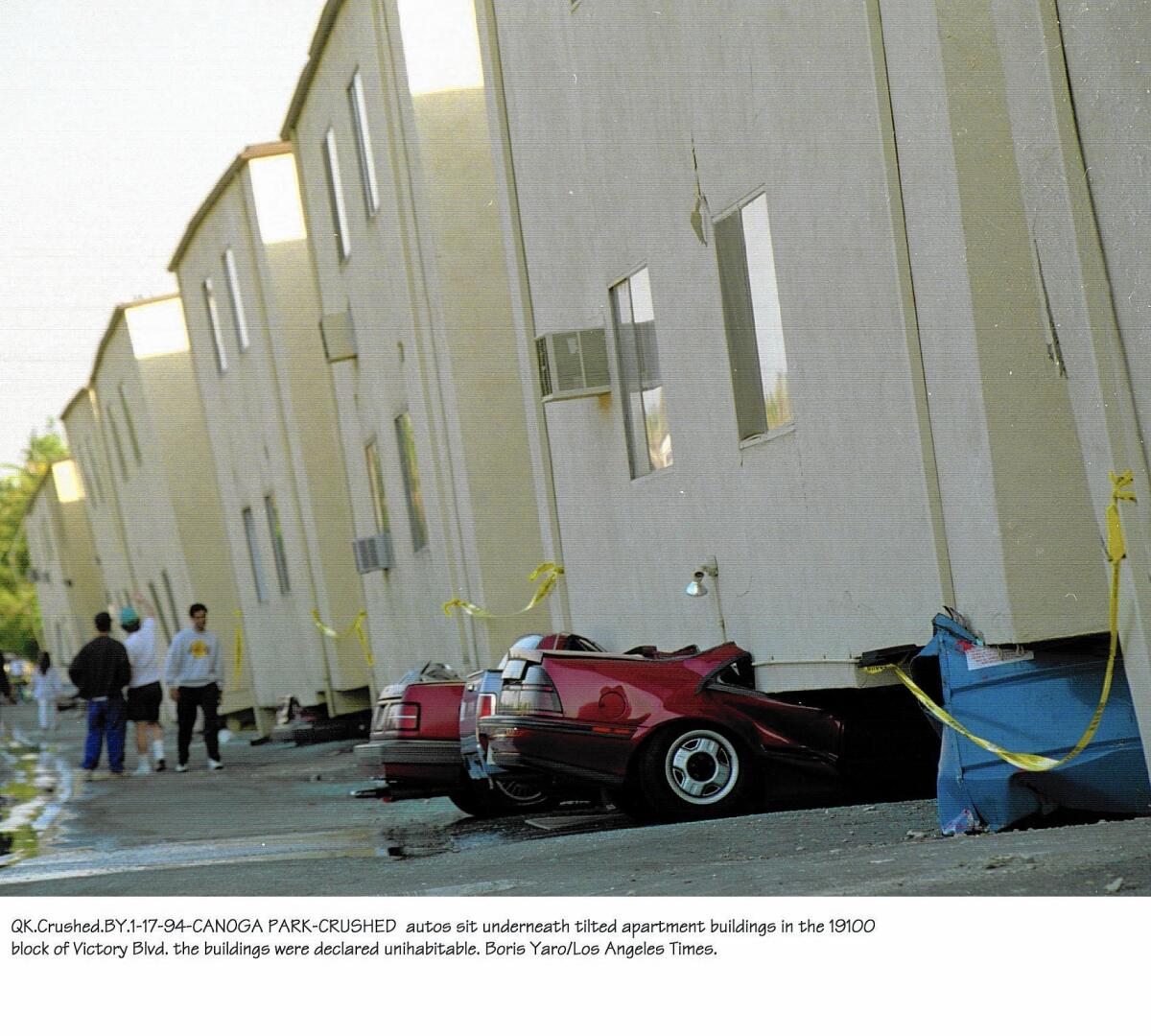Renters won’t have to shoulder quake retrofit costs, L.A. councilman vows

- Share via
Since Los Angeles embarked on plans to require costly retrofitting of thousands of earthquake-vulnerable buildings, some apartment renters have feared the costs of the work would be passed on to them.
The city is already ranked as one of the least affordable for renters, and a recent USC study said rents were expected to rise by an average of 8% over the next two years.
But there are growing signs that city officials are going to try to protect renters. The head of the City Council’s housing committee recently pledged that tenants would not face huge rent hikes as a result of earthquake retrofits.
“Let’s be very clear as we move forward: This burden of this new mandate, this new obligation, will not be transferred to tenants in this city.… It’s not going to be a pass-through of 100% to tenants,” Councilman Gil Cedillo said last week to a packed room of owners and tenants rights group members.
“We will work hard with all of you here to find the resources at various levels — state, federal, philanthropic, market — to help bear the brunt of these costs,” he said.
Some kind of deal that satisfies tenants could clear the way for Mayor Eric Garcetti’s earthquake safety proposals. His plans would require owners to pay for retrofits, which could cost as much as $130,000 for wooden apartments and millions for taller concrete buildings.
RELATED: L.A. City Council embraces Mayor Eric Garcetti’s quake retrofit plan
Many property owners and tenants have told the City Council that they support retrofits, but asked officials to ensure that the process wouldn’t be an overwhelming financial burden.
Tenants have raised concerns that passing the costs onto renters would burden those already struggling in a high-rent city. Under current law, rents could go up as much as $75 per month to pay for retrofits.
In San Francisco, officials passed a landmark law in 2013 that required owners to retrofit vulnerable wooden apartment buildings, but allowed the costs to be passed on to renters — even those protected by rent control — over a 20-year period. Exceptions have been made to help ease the burden on the lowest income renters.
Cedillo said he would try to ensure that no tenants face a heavy burden.
“Our goal is ... to bring as many resources, a menu of resources, to the building owners so that they can comply,” he said.
These options could include low-interest loans and tax breaks to owners who retrofit. Councilman Bob Blumenfield, together with Cedillo, is looking into expanding a program that could provide private loans for retrofitting that are paid back through property taxes.
RELATED: Earthquake could destroy L.A.’s water lifeline
Cedillo, the mayor’s staff and other council members recently met with state lawmakers in Sacramento and are hopeful that the Legislature will also assist on the issue.
“It would be like being in the Midwest and not prepare for tornadoes. You know you’re going to have tornadoes, how do you not prepare for them?” Cedillo said. “We know an 8.0 earthquake would devastate tens of thousands of affordable homes.”
The dangers of concrete buildings have been known since the 1971 Sylmar earthquake, when hospital buildings were destroyed. Wooden buildings with weak first floors are also a well-known risk: Such a “soft-story” structure was involved in the deaths of 16 people when the upper floors of the Northridge Meadows apartment complex pancaked onto the ground floor in the 1994 earthquake. Economically, larger quakes could shut down entire commercial districts if many non-retrofitted buildings collapse.
The Times reported in 2013 that as many as 50 of the more than 1,000 concrete buildings across the city would collapse in a big earthquake. There are about 13,000 wooden soft-story apartment buildings across the city, according to L.A.’s Department of Building and Safety.
Cedillo last week instructed building officials to report back with better estimates on the cost of retrofitting these buildings. He also instructed housing officials to work with tenant and landlord groups to come up with recommendations on how the retrofit costs could be paid for and shared among tenants and owners.
[email protected]
Twitter: @RosannaXia
Times staff writer Rong-Gong Lin II contributed to this report.
More to Read
Sign up for Essential California
The most important California stories and recommendations in your inbox every morning.
You may occasionally receive promotional content from the Los Angeles Times.











